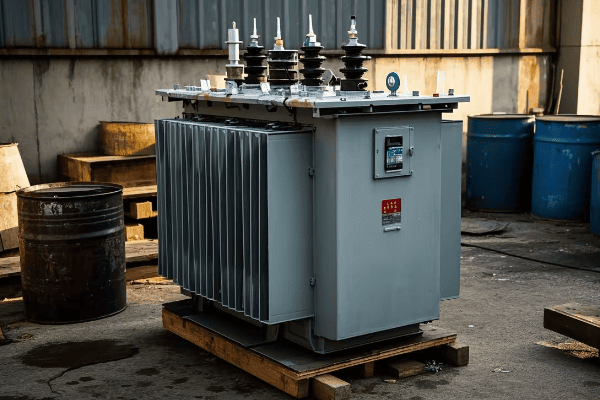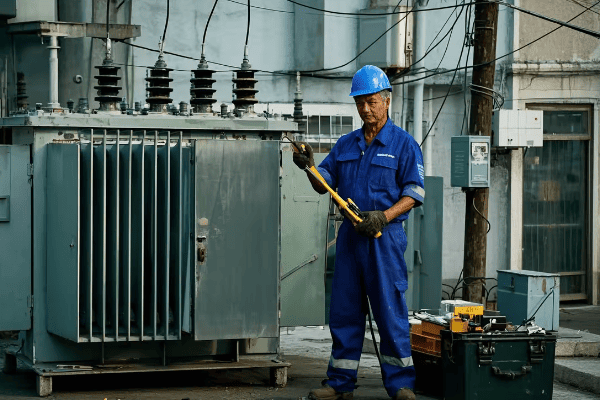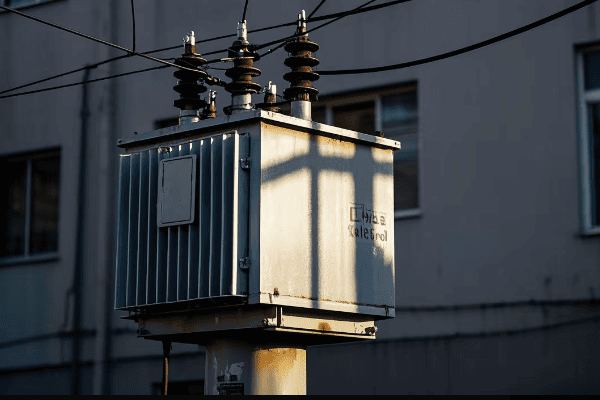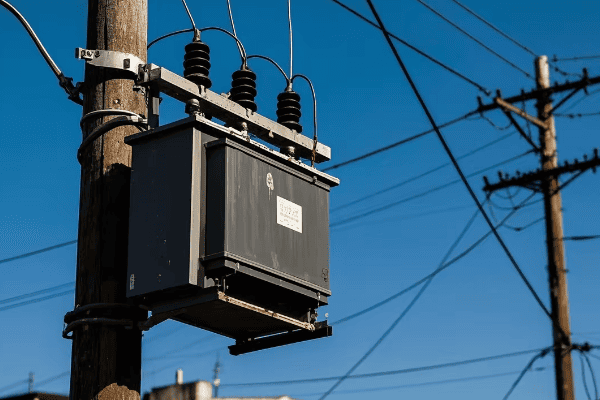Distribution Transformer Market: Driving Smart Grid Evolution and Sustainable Energy Solutions in 2025 and Beyond?
Are you prepared for the revolutionary changes coming to the distribution transformer market? The energy landscape is shifting rapidly, and those who aren’t ready may be left behind.
The distribution transformer market is set to drive smart grid evolution and sustainable energy solutions from 2025 onwards. Key factors include the integration of IoT and AI technologies, increased focus on energy efficiency, growing renewable energy adoption, and the need for grid modernization to support electric vehicle infrastructure and decentralized power generation.

As someone who has been deeply involved in the power distribution industry for years, I’ve witnessed firsthand the exciting developments shaping our future. In this article, I’ll guide you through the key trends and innovations that are transforming the distribution transformer market, and how they’re paving the way for a smarter, more sustainable energy future.
What Key Trends Are Shaping the Distribution Transformer Market in 2025 and Beyond?
Are you wondering what forces will drive the distribution transformer market in the coming years? You’re not alone. Many industry professionals are keen to understand the evolving landscape.
Key trends shaping the distribution transformer market include the integration of smart technologies, focus on energy efficiency, adoption of eco-friendly materials, increased demand for renewable energy integration, and the rise of modular and compact designs. These trends are driven by the need for grid modernization, sustainability goals, and the evolving energy consumption patterns.

Let’s dive deeper into these transformative trends:
Smart Technology Integration
The future of distribution transformers is intelligent and connected.
Smart Features:
- Real-time monitoring and diagnostics
- IoT connectivity for grid communication
- AI-driven predictive maintenance
Energy Efficiency Focus
Efficiency is becoming a primary concern in transformer design.
Efficiency Advancements:
- Use of advanced core materials like amorphous metals
- Improved winding designs to reduce losses
- Optimized cooling systems for better performance
Eco-Friendly Materials
Sustainability is driving material choices in transformer manufacturing.
Sustainable Innovations:
- Biodegradable transformer oils
- Recyclable components
- Low-carbon footprint manufacturing processes
Renewable Energy Integration
Transformers are evolving to support the growth of renewable energy.
Renewable Support Features:
- Bi-directional power flow capabilities
- Enhanced voltage regulation for variable inputs
- Specialized designs for wind and solar farm applications
| Trend | Impact on Market | Adoption Timeline |
|---|---|---|
| Smart Technology | High | Short to Medium Term |
| Energy Efficiency | Very High | Immediate to Long Term |
| Eco-Friendly Materials | Moderate | Medium to Long Term |
| Renewable Integration | High | Short to Medium Term |
In my experience working with distribution transformer manufacturers, these trends are already shaping product development strategies. I recall a recent project where we were designing a new line of transformers for a major utility. The emphasis on smart features was striking – every unit was equipped with advanced sensors and communication modules, a far cry from the passive devices of just a few years ago.
It’s important to note that while these trends are exciting, they also present challenges. In one case, I worked with a manufacturer struggling to balance the cost of implementing smart technologies with market demands for competitive pricing. We had to develop a modular approach, allowing for basic smart features in standard models with options for more advanced capabilities as add-ons.
Don’t overlook the impact of energy efficiency regulations on these trends. I recently consulted on a project where a utility was upgrading its entire transformer fleet to meet new efficiency standards. The focus on reducing losses led to some innovative designs, including the use of hybrid core materials that offered a balance between performance and cost.
Another crucial aspect is the growing demand for transformers that can handle renewable energy integration. I’m currently advising on a project to develop specialized transformers for offshore wind farms. These units need to withstand harsh marine environments while managing the variable output of wind turbines – a unique challenge that’s driving innovation in materials and design.
Lastly, it’s exciting to see how the trend towards eco-friendly materials is spurring new research. I visited a lab recently where they’re developing a new type of biodegradable transformer oil derived from plant sources. If successful, this could significantly reduce the environmental impact of transformer installations and maintenance.
The key trends shaping the distribution transformer market in 2025 and beyond are not just about technological advancement – they’re about reimagining the role of transformers in our evolving energy landscape. From smart technologies to eco-friendly materials, these trends are driving a new era of innovation in the industry. As we move forward, the ability to adapt to and leverage these trends will be crucial for success in the distribution transformer market.
How Are Distribution Transformers Catalyzing Smart Grid Evolution in the Coming Decade?
Are you curious about the role of distribution transformers in the smart grid revolution? You should be. These devices are becoming the unsung heroes of our evolving power infrastructure.
Distribution transformers are catalyzing smart grid evolution by serving as intelligent nodes in the power network. They’re integrating advanced monitoring, communication, and control capabilities, enabling real-time data exchange, automated grid management, and efficient integration of distributed energy resources. This transformation is crucial for creating a more resilient, flexible, and efficient power distribution system.

Let’s explore how distribution transformers are driving smart grid evolution:
Real-Time Monitoring and Analytics
Modern transformers provide continuous insights into grid conditions.
Monitoring Capabilities:
- Load and power quality analysis
- Temperature and oil condition tracking
- Fault detection and prediction
Advanced Communication Systems
Transformers are becoming key communication points in the grid.
Communication Features:
- Integration with SCADA systems
- Support for various protocols (e.g., IEC 61850)
- Secure data transmission capabilities
Automated Grid Management
Smart transformers enable more autonomous grid operations.
Automation Aspects:
- Dynamic load balancing
- Voltage regulation and power factor correction
- Self-healing capabilities during outages
Distributed Energy Resource Integration
Transformers facilitate the integration of renewable and distributed generation.
DER Support:
- Bi-directional power flow management
- Microgrid support and islanding capabilities
- Enhanced harmonics management for diverse energy sources
| Smart Grid Feature | Transformer Role | Grid Benefit |
|---|---|---|
| Real-Time Monitoring | Data Collection Point | Improved Reliability |
| Advanced Communication | Network Node | Enhanced Control |
| Automated Management | Intelligent Actor | Increased Efficiency |
| DER Integration | Flexible Interface | Greater Sustainability |
In my years working on smart grid projects, I’ve seen the transformative impact of intelligent distribution transformers. I remember a project where we upgraded a city’s aging transformer network with smart units. The change was remarkable – suddenly, grid operators had real-time visibility into power quality, load patterns, and potential issues across the entire distribution network. This level of insight allowed for proactive maintenance and significantly reduced outage times.
It’s important to note that the role of transformers in smart grids goes beyond just data collection. In one case, I worked on implementing a self-healing grid system where smart transformers played a crucial role. When a fault occurred, these transformers could automatically reconfigure the network, rerouting power to minimize the impact of the outage. This capability not only improved reliability but also reduced the workload on maintenance crews.
Don’t overlook the importance of standardization in this evolution. I recently participated in an industry working group focused on developing common communication standards for smart grid devices. This effort is crucial for ensuring that transformers from different manufacturers can seamlessly integrate into the smart grid ecosystem.
Another crucial aspect is cybersecurity. As transformers become more connected, they also become potential entry points for cyber attacks. I’m currently advising on a project to develop robust security protocols for smart transformers. This includes encrypted communication, secure firmware updates, and intrusion detection systems – all essential for maintaining the integrity of the smart grid.
Lastly, it’s exciting to see how smart transformers are enabling new business models in the energy sector. I recently consulted on a pilot project where utility customers could participate in demand response programs directly through their local distribution transformer. The transformer’s ability to monitor and manage local loads in real-time made it possible to create a more dynamic and responsive energy market at the neighborhood level.
Distribution transformers are not just passive components in the smart grid evolution – they’re active catalysts driving the change. By serving as intelligent, communicative nodes in the power network, these devices are enabling a level of grid awareness and control that was unimaginable just a few years ago. As we move into the next decade, the continued development of smart transformer technology will be crucial in realizing the full potential of the smart grid, creating a more efficient, reliable, and sustainable power distribution system for the future.
What Role Do Distribution Transformers Play in Advancing Sustainable Energy Solutions?
Are you concerned about the environmental impact of our energy systems? You’re not alone. The push for sustainability is reshaping the role of distribution transformers in significant ways.
Distribution transformers play a crucial role in advancing sustainable energy solutions by improving energy efficiency, facilitating renewable energy integration, and supporting electrification initiatives. They enable bi-directional power flow for distributed generation, reduce transmission losses, and provide the flexibility needed for smart grid operations, all contributing to a more sustainable energy infrastructure.

Let’s delve into the key roles of distribution transformers in sustainable energy:
Energy Efficiency Improvements
Modern transformers significantly reduce energy losses in distribution.
Efficiency Features:
- Advanced core materials for lower no-load losses
- Optimized winding designs to minimize load losses
- Intelligent load management for peak efficiency
Renewable Energy Integration
Transformers are crucial for connecting renewable sources to the grid.
Renewable Support:
- Handling variable inputs from solar and wind
- Providing voltage support for distributed generation
- Enabling energy storage integration
Electrification Support
Transformers are key to expanding clean electrification efforts.
Electrification Roles:
- Supporting electric vehicle charging infrastructure
- Enabling electrification of heating and industrial processes
- Facilitating microgrids and community energy projects
Lifecycle Sustainability
The entire lifecycle of transformers is being optimized for sustainability.
Sustainable Practices:
- Use of eco-friendly materials and biodegradable oils
- Design for recyclability and easy end-of-life disposal
- Reduced carbon footprint in manufacturing and transportation
| Sustainability Aspect | Transformer Contribution | Environmental Impact |
|---|---|---|
| Energy Efficiency | Reduced Losses | Lower Carbon Emissions |
| Renewable Integration | Grid Flexibility | Increased Clean Energy Use |
| Electrification | Infrastructure Support | Reduced Fossil Fuel Dependence |
| Lifecycle Practices | Reduced Environmental Footprint | Conservation of Resources |
In my experience working on sustainable energy projects, the impact of advanced distribution transformers has been profound. I recall a project where we replaced an urban area’s aging transformer fleet with high-efficiency models. The energy savings were impressive – we saw a reduction in distribution losses of over 30%, which translated to significant carbon emission reductions equivalent to taking thousands of cars off the road.
It’s important to note that the role of transformers in sustainability goes beyond just efficiency. In one case, I worked on integrating a large solar farm into a rural grid. The specialized transformers we used were crucial in managing the variable output of the solar panels and ensuring stable power delivery to the community. This project not only increased the region’s renewable energy capacity but also improved overall grid stability.
Don’t overlook the importance of transformers in enabling new sustainable technologies. I’m currently advising on a project to develop a network of fast-charging stations for electric vehicles. The transformers we’re designing for this application need to handle high power demands and frequent load fluctuations – challenges that are driving innovations in materials and cooling systems.
Another crucial aspect is the role of smart transformers in demand-side management. In a recent pilot project, we used intelligent transformers to implement a community-wide energy conservation program. These transformers could adjust voltage levels slightly during peak times, reducing overall energy consumption without impacting service quality. This kind of fine-tuned control is essential for creating more sustainable energy consumption patterns.
Lastly, it’s exciting to see how transformer manufacturers are embracing sustainability in their own operations. I recently visited a factory that had completely redesigned its production line to minimize waste and energy use. They were even using solar power for part of their manufacturing process – a great example of the industry practicing what it preaches.
Distribution transformers are playing a pivotal role in advancing sustainable energy solutions. From improving efficiency and integrating renewables to supporting electrification and embracing lifecycle sustainability, these devices are at the forefront of our transition to a cleaner energy future. As we continue to innovate in this field, transformers will remain key enablers of the sustainable, resilient, and efficient power systems we need to address our global energy challenges.
How Is the Distribution Transformer Market Adapting to Meet Future Energy Demands?
Are you wondering how the transformer industry is keeping up with rapidly changing energy needs? It’s a critical question as our power demands evolve at an unprecedented pace.
The distribution transformer market is adapting to future energy demands through technological innovation, increased customization, and enhanced manufacturing processes. Manufacturers are developing more efficient, smart, and flexible transformers capable of handling bidirectional power flow, integrating with renewable sources, and supporting electric vehicle charging infrastructure. The market is also shifting towards more resilient and compact designs to meet urban and remote area needs.

Let’s explore how the market is evolving to meet these challenges:
Technological Innovation
Cutting-edge technologies are being incorporated into transformer designs.
Innovative Features:
- Solid-state transformer development
- Advanced sensor integration for real-time monitoring
- AI-driven predictive maintenance capabilities
Customization and Flexibility
Transformers are being tailored to specific application needs.
Customization Aspects:
- Modular designs for easy upgrades and maintenance
- Configurable power ratings to match varying load profiles
- Specialized units for renewable energy and EV charging applications
Enhanced Manufacturing Processes
Production methods are evolving to improve quality and reduce costs.
Manufacturing Advancements:
- Automation and robotics in assembly lines
- 3D printing for complex components
- Advanced testing and quality control procedures
Resilience and Compact Design
Transformers are being designed to withstand environmental challenges and space constraints.
Design Improvements:
- Ruggedized construction for extreme weather conditions
- Compact designs for urban installations
- Eco-friendly cooling systems for improved reliability
| Adaptation Area | Market Response | Future Impact |
|---|---|---|
| Technology | Smart Features Integration | Enhanced Grid Management |
| Customization | Application-Specific Designs | Improved Efficiency and Performance |
| Manufacturing | Advanced Production Techniques | Cost Reduction and Quality Improvement |
| Design | Resilient and Compact Units | Wider Application Range |
In my years of experience in the transformer industry, I’ve witnessed remarkable adaptations to meet changing energy demands. I remember working on a project to develop transformers for a new urban development that required a mix of residential, commercial, and EV charging capabilities. The challenge led us to create a highly flexible transformer design that could dynamically adjust to varying load types and power quality requirements throughout the day.
It’s important to note that adaptation in the transformer market isn’t just about new products – it’s also about rethinking existing infrastructure. In one case, I consulted on a grid modernization project where we had to upgrade a city’s transformer network without replacing all units. We developed retrofit kits that added smart monitoring and control capabilities to existing transformers, effectively bridging the gap between old infrastructure and new energy demands.
Don’t overlook the role of materials science in this adaptation process. I’m currently involved in a research project exploring the use of high-temperature superconducting materials in transformer design. If successful, this could lead to transformers with significantly higher efficiency and power density, potentially revolutionizing how we approach power distribution in high-demand areas.
Another crucial aspect is the growing focus on sustainability in transformer manufacturing. I recently visited a factory that had implemented a closed-loop production system, recycling materials from old transformers into new units. This approach not only reduces environmental impact but also helps address potential material shortages in the face of growing global demand.
Lastly, it’s exciting to see how the market is adapting to the needs of renewable energy integration. I’m advising on a project to develop specialized transformers for offshore wind farms. These units need to withstand harsh marine environments, handle variable power inputs, and operate reliably with minimal maintenance – a unique set of challenges that’s driving innovation in materials, design, and remote monitoring technologies.
The distribution transformer market is demonstrating remarkable adaptability in the face of future energy demands. From technological innovations and customized solutions to improved manufacturing processes and resilient designs, the industry is evolving rapidly to meet the complex needs of our changing energy landscape. As we move forward, this ability to adapt and innovate will be crucial in ensuring that our power distribution infrastructure can support the sustainable, efficient, and reliable energy systems of the future.
What Technological Innovations Will Define Distribution Transformers Beyond 2025?
Are you curious about the next big leaps in transformer technology? You should be. The innovations coming after 2025 could revolutionize how we think about power distribution.
Technological innovations defining distribution transformers beyond 2025 will include solid-state designs, AI-driven self-optimization, advanced materials like high-temperature superconductors, and quantum sensing technologies. We’ll also see increased integration of energy storage, enhanced cybersecurity features, and transformers designed for extreme environments and space applications.

Let’s explore these groundbreaking innovations in more detail:
Solid-State Transformer Technology
The future may see a shift from traditional electromagnetic transformers to solid-state designs.
Solid-State Advantages:
- Direct DC-AC conversion capabilities
- Smaller size and lighter weight
- Enhanced power quality control
AI-Driven Self-Optimization
Artificial Intelligence will take transformer operation to new levels of efficiency.
AI Capabilities:
- Real-time load forecasting and adjustment
- Predictive maintenance and self-diagnosis
- Autonomous grid balancing and power flow optimization
Advanced Materials
New materials will revolutionize transformer performance and efficiency.
Material Innovations:
- High-temperature superconducting windings
- Nanomaterial-enhanced insulation
- Biodegradable and eco-friendly cooling fluids
Quantum Sensing Technologies
Quantum sensors could provide unprecedented accuracy in monitoring transformer health.
Quantum Sensing Applications:
- Ultra-precise current and voltage measurements
- Early detection of insulation degradation
- Magnetic field anomaly detection for fault prediction
| Innovation | Potential Impact | Implementation Timeline |
|---|---|---|
| Solid-State Design | High | Medium-term (5-10 years) |
| AI Self-Optimization | Very High | Short to Medium-term (3-7 years) |
| Advanced Materials | High | Medium to Long-term (7-15 years) |
| Quantum Sensing | Moderate to High | Long-term (10-20 years) |
In my years of working on cutting-edge transformer technologies, I’ve seen some truly exciting developments. I remember being part of an early prototype project for solid-state transformers. The potential for these devices to revolutionize power distribution was clear, even though we faced significant challenges in scaling the technology for high-power applications. Now, as we approach 2025, I’m seeing renewed interest and investment in this area, with promising breakthroughs on the horizon.
It’s important to note that while these innovations are exciting, their implementation will likely be gradual. In one case, I worked with a utility to develop a roadmap for integrating AI-driven optimization into their transformer fleet. We started with a pilot program on a few critical units, gradually expanding as we refined the algorithms and demonstrated the benefits. This measured approach allowed for a smooth transition and helped build confidence in the new technology.
Don’t overlook the potential of advanced materials in shaping the future of transformers. I’m currently advising on a research project exploring the use of high-temperature superconductors in transformer windings. The potential for near-zero resistance could dramatically improve efficiency, but we’re still working on overcoming challenges related to cooling and cost-effectiveness. It’s a reminder that even the most promising innovations often require years of development before they’re ready for widespread adoption.
Another crucial aspect is the role of quantum technologies in transformer monitoring. While still in its early stages, I’ve been following research on quantum sensors for ultra-precise measurements in electrical systems. In a recent conference, I saw a demonstration of a quantum-based current sensor that could detect minute fluctuations impossible to measure with conventional technology. The implications for predictive maintenance and fault detection are enormous.
Lastly, it’s exciting to see how innovations in transformer technology are opening up new possibilities in extreme environments. I recently consulted on a project developing transformers for deep-sea power distribution in offshore renewable energy farms. The challenges of operating in high-pressure, corrosive environments are pushing the boundaries of material science and design, potentially leading to innovations that could benefit terrestrial applications as well.
The technological innovations that will define distribution transformers beyond 2025 are not just incremental improvements – they represent a fundamental reimagining of how we approach power transformation and distribution. From solid-state designs to quantum sensing, these advancements promise to make our power systems more efficient, reliable, and adaptable to the changing energy landscape. As we move into this new era of transformer technology, the ability to understand and leverage these innovations will be crucial for anyone involved in the power industry.
How Are Global Regulations Influencing the Evolution of the Distribution Transformer Market?
Are you finding it challenging to keep up with the changing regulatory landscape in the transformer industry? You’re not alone. Global regulations are reshaping the market in significant ways.
Global regulations are significantly influencing the distribution transformer market by driving energy efficiency standards, environmental protection measures, and safety requirements. These regulations are pushing manufacturers to develop more efficient, eco-friendly, and reliable transformers. They’re also influencing market dynamics by creating new opportunities for innovative technologies and sustainable practices.

Let’s explore how global regulations are shaping the transformer market:
Energy Efficiency Standards
Governments worldwide are implementing stricter efficiency requirements.
Regulatory Impacts:
- Mandated minimum efficiency levels
- Incentives for high-efficiency transformer adoption
- Phasing out of less efficient models
Environmental Protection Measures
Regulations are focusing on reducing the environmental impact of transformers.
Environmental Regulations:
- Restrictions on hazardous materials (e.g., PCBs)
- Requirements for biodegradable insulating fluids
- End-of-life recycling and disposal guidelines
Safety and Reliability Standards
Safety regulations are becoming more stringent and comprehensive.
Safety Requirements:
- Enhanced fire resistance standards
- Improved short-circuit withstand capabilities
- Cybersecurity standards for smart transformers
Smart Grid Compatibility
Regulations are increasingly mandating smart grid readiness.
Smart Grid Regulations:
- Requirements for communication interfaces
- Data privacy and security standards
- Interoperability guidelines for grid integration
| Regulatory Area | Market Impact | Global Trend |
|---|---|---|
| Energy Efficiency | High | Increasing Stringency |
| Environmental Protection | Moderate to High | Growing Focus |
| Safety and Reliability | High | Continuous Enhancement |
| Smart Grid Compatibility | Moderate | Rapidly Evolving |
In my experience working with transformer manufacturers and utilities worldwide, I’ve seen firsthand how regulations can drive innovation and market shifts. I remember a project in Europe where new efficiency standards were introduced, requiring a significant redesign of our transformer line. Initially, this seemed like a daunting challenge, but it ultimately led to the development of more advanced core materials and winding techniques that not only met the new standards but exceeded them, giving us a competitive edge in the market.
It’s important to note that while regulations can be challenging to navigate, they often create new opportunities. In one case, I worked with a manufacturer to develop transformers that met stringent environmental regulations in a Scandinavian country. The eco-friendly design we created not only complied with local laws but also opened up new markets in other environmentally conscious regions.
Don’t overlook the impact of regional variations in regulations. I recently advised on a global expansion strategy for a transformer company, and we had to carefully map out the regulatory landscape in each target market. What was compliant in one country could be substandard in another, requiring a flexible approach to design and manufacturing.
Another crucial aspect is the role of regulations in driving smart grid adoption. I’m currently involved in a project where we’re adapting transformer designs to meet new smart grid readiness requirements in several Asian countries. These regulations are not just about adding communication capabilities; they’re pushing us to rethink the fundamental role of transformers in the grid ecosystem.
Lastly, it’s exciting to see how some companies are getting ahead of regulations by voluntarily adopting higher standards. I recently visited a manufacturer that had implemented sustainability practices far beyond current regulatory requirements. They saw this as not just an ethical choice but a strategic move to future-proof their products against expected regulatory changes.
Global regulations are a powerful force shaping the evolution of the distribution transformer market. From driving energy efficiency and environmental protection to ensuring safety and smart grid compatibility, these regulations are pushing the industry towards more advanced, sustainable, and integrated solutions. While navigating this complex regulatory landscape can be challenging, it’s also creating opportunities for innovation and differentiation. As we move forward, staying ahead of regulatory trends will be crucial for success in the global transformer market.
What Opportunities Does the Growing Renewable Energy Sector Present for Distribution Transformer Manufacturers?
Are you wondering how the boom in renewable energy affects the transformer industry? It’s a game-changer, offering exciting new opportunities for those ready to adapt.
The growing renewable energy sector presents significant opportunities for distribution transformer manufacturers. There’s increasing demand for specialized transformers that can handle variable inputs from solar and wind sources, integrate with energy storage systems, and support microgrid operations. Manufacturers can also innovate in areas like bi-directional power flow, enhanced voltage regulation, and smart grid integration capabilities.

Let’s explore the key opportunities in the renewable energy sector:
Specialized Transformer Designs
Renewable energy sources require transformers tailored to their unique characteristics.
Design Opportunities:
- Solar farm step-up transformers
- Wind turbine pad-mount transformers
- Offshore wind farm transformers
Energy Storage Integration
Transformers play a crucial role in connecting storage systems to the grid.
Storage-Related Opportunities:
- Battery energy storage system (BESS) interface transformers
- Transformers with built-in storage capabilities
- Hybrid renewable-storage system transformers
Microgrid Support
The rise of microgrids creates demand for specialized transformer solutions.
Microgrid Transformer Features:
- Bi-directional power flow capabilities
- Islanding support and seamless grid reconnection
- Enhanced power quality management
Smart Grid Integration
Renewable energy drives the need for smarter, more flexible transformers.
Smart Integration Capabilities:
- Advanced monitoring and control features
- Real-time data communication for grid balancing
- Adaptive voltage regulation for variable renewable inputs
| Opportunity Area | Market Potential | Technical Challenge Level |
|---|---|---|
| Specialized Designs | High | Moderate |
| Storage Integration | Very High | High |
| Microgrid Support | Moderate to High | High |
| Smart Grid Integration | High | Moderate to High |
In my years working with renewable energy projects, I’ve seen the transformer industry evolve rapidly to meet new challenges. I recall a project where we were integrating a large solar farm into an existing grid. The variable output of the solar panels presented unique challenges for voltage regulation and power quality. We ended up designing a custom transformer with advanced on-load tap changing capabilities and built-in power quality management features. This not only solved the immediate integration issues but also opened up a new product line for the manufacturer.
It’s important to note that opportunities in the renewable sector often require a shift in design philosophy. In one case, I worked with a traditional transformer manufacturer entering the wind energy market. We had to completely rethink our approach to insulation and cooling to create transformers that could operate reliably in the harsh conditions of offshore wind farms. This adaptation process was challenging but ultimately led to innovations that benefited our entire product range.
Don’t overlook the potential of energy storage integration. I’m currently advising on a project developing transformers with built-in battery storage capabilities. These hybrid units can smooth out the variability of renewable sources and provide ancillary services to the grid. While still in the early stages, this concept has the potential to revolutionize how we think about energy distribution and storage.
Another crucial aspect is the role of transformers in enabling community renewable energy projects. I recently consulted on a microgrid project for a remote village, where the transformer needed to manage inputs from solar panels, a small wind turbine, and a biomass generator, while also supporting islanding capabilities. This kind of flexibility is becoming increasingly important as communities seek energy independence and resilience.
Lastly, it’s exciting to see how the renewable energy sector is driving innovations in transformer materials and manufacturing. I visited a research lab where they’re developing new types of magnetic materials specifically optimized for the high-frequency harmonics common in renewable energy systems. These materials could lead to smaller, more efficient transformers specifically tailored for renewable energy applications.
The growing renewable energy sector presents a wealth of opportunities for distribution transformer manufacturers who are willing to innovate and adapt. From specialized designs for solar and wind farms to advanced solutions for energy storage integration and microgrid support, the possibilities are vast. As the world continues its transition to cleaner energy sources, transformers will play a crucial role in enabling this shift. Manufacturers who can anticipate and meet the unique needs of the renewable energy sector will be well-positioned for success in this rapidly evolving market.
How Are Smart and IoT-Enabled Distribution Transformers Reshaping the Market Landscape?
Are you struggling to keep up with the rapid changes in transformer technology? You’re not alone. The rise of smart and IoT-enabled transformers is revolutionizing the industry at an unprecedented pace.
Smart and IoT-enabled distribution transformers are reshaping the market by offering real-time monitoring, predictive maintenance, and enhanced grid management capabilities. These advanced transformers provide utilities with unprecedented insights into their distribution networks, enabling more efficient operations, reduced downtime, and improved power quality. They’re also facilitating the integration of renewable energy sources and supporting the development of smart cities.

Let’s delve into how these smart transformers are changing the landscape:
Real-Time Monitoring and Analytics
Smart transformers provide continuous insights into their operation and the surrounding grid.
Monitoring Capabilities:
- Load and power quality analysis
- Temperature and oil condition tracking
- Fault detection and prediction
Predictive Maintenance
IoT-enabled transformers can anticipate and prevent failures.
Predictive Features:
- AI-driven analysis of operational data
- Early warning systems for potential issues
- Optimized maintenance scheduling
Enhanced Grid Management
Smart transformers enable more efficient and responsive grid operations.
Grid Management Improvements:
- Dynamic load balancing
- Voltage regulation and power factor correction
- Automatic fault isolation and self-healing capabilities
Renewable Energy Integration
These transformers facilitate the integration of distributed energy resources.
Integration Capabilities:
- Handling bi-directional power flow
- Managing intermittent renewable inputs
- Supporting microgrid operations
| Smart Feature | Market Impact | Implementation Challenge |
|---|---|---|
| Real-Time Monitoring | High | Moderate |
| Predictive Maintenance | Very High | High |
| Enhanced Grid Management | High | Moderate to High |
| Renewable Integration | Moderate to High | High |
In my experience working with smart transformer technologies, the impact on utility operations has been profound. I remember a project where we upgraded a city’s transformer network with IoT-enabled units. Within months, the utility was able to reduce unplanned outages by 30% thanks to the early warning capabilities of these smart devices. The real-time insights also allowed for more efficient load management, reducing overall energy losses in the distribution network.
It’s important to note that the benefits of smart transformers extend beyond just operational efficiency. In one case, I worked with a utility to implement a network of IoT-enabled transformers in a rapidly growing suburban area. The data from these transformers provided invaluable insights for urban planning, helping the city anticipate and prepare for future power needs as new developments were proposed.
Don’t overlook the role of data analytics in maximizing the potential of smart transformers. I’m currently advising on a project where we’re using machine learning algorithms to analyze data from a fleet of smart transformers. The insights gained are not only improving maintenance practices but also informing long-term infrastructure planning and investment decisions.
Another crucial aspect is the integration of smart transformers with other grid technologies. I recently consulted on a project combining smart transformers with advanced metering infrastructure (AMI). This integration created a highly responsive distribution system capable of real-time load management and even detecting energy theft – issues that were previously challenging to address.
Lastly, it’s exciting to see how smart transformers are enabling new business models in the energy sector. I’m part of a team exploring the concept of "Transformer-as-a-Service," where utilities can lease smart transformers and pay based on performance metrics. This model could make advanced transformer technology more accessible to smaller utilities and accelerate the modernization of our power infrastructure.
Smart and IoT-enabled distribution transformers are not just an upgrade to existing technology – they represent a fundamental shift in how we manage and interact with our power distribution systems. These devices are turning traditionally passive network elements into active, intelligent nodes that can communicate, analyze, and adapt in real-time. As this technology continues to evolve and become more widespread, it will play a crucial role in creating more efficient, reliable, and flexible power grids capable of meeting the complex energy needs of the future.
Conclusion
The distribution transformer market is undergoing a profound transformation, driven by smart grid evolution, sustainable energy solutions, and technological innovations. From 2025 and beyond, we’ll see transformers playing a pivotal role in shaping a more efficient, reliable, and sustainable energy future.
Free CHBEB Transformer Catalog Download
Get the full range of CHBEB transformers in one catalog.
Includes oil-immersed, dry-type, pad-mounted, and custom solutions.
Quick Message
Request A free quote
We'd like to work with you
- +86 15558785111
- [email protected]
- +86 15558785111
What We Do
CHINA BEI ER BIAN (CHBEB) GROUP, with 218 million in registered capital, originated from Beijing Beierbian Transformer Group. Headquartered in Beijing for R&D, it operates major production bases in Nanjing and Yueqing, producing high-quality products.
Latest Product
address
BeiJing
No 3,RongJing East Road,BeiJing Economic Technological Development Area,BeiJing,China
JiangSu
No 7️Xiangfeng Road,Jiangning,NanJing,JiangSu,China
WenZhou
No.211, Wei 16 Road, Industrial Zone, Yueqing, Wenzhou, Zhejiang, China.
XiangYang Industrial Zone ,YueQing,WenZhou,ZheJiang,China
contact us
- [email protected]
- +86 13057780111
- +86 13057780111
- +86 15558785111
Copyright © Bei Er Bian Group


